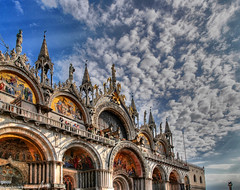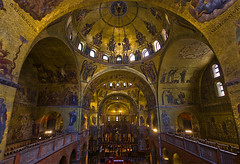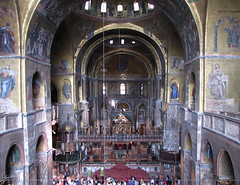St. Mark's Basilica
Da Venicewiki, il wiki di Venezia
(Nuova pagina: <poem> <flickr>3224568451|right</flickr>The '''St. Mark's Basilica''' is the magnificent building that is the symbol of power and the greatness of the Venice Republic during the th...) |
(Nuova pagina: <poem> <flickr>3224568451|right</flickr>The '''St. Mark's Basilica''' is the magnificent building that is the symbol of power and the greatness of the Venice Republic during the th...) |
Versione corrente
It underwent many modifications over time from primary brick construction, but already set with arches that overlook the St. Mark's Square.
In 828 Justiniano Partecipazio laid the foundation of St. Mark's Basilica after he was transported from Alexandria to Venice the body of the Evangelist, by gathering the oratory of the previous church dedicated to San Teodoro.
Unfortunately, the new factory caught fire in 976, and was immediately rebuilt by the Doge Pietro Orseolo I. In 1043 Domenico Contarini carried on the work, which were completed in 1071 by Domenico Selvo, and finally Vitale Falier he made the solemn consecration in 1094.
The Church, therefore, was restored, was covered in marbles and this is probably ended only after 1159, when he also began a program of expansion of the mosaic decoration.
The frescoes were removed and the church was completely covered with mosaics. The lobby was covered in only around the thirteenth century mosaics.
If they ignore the architects, but the style that predominates is the greek byzantine with some mixture of Arabic and German. This church always remained the ducal chapel until 1807, when it became a cathedral by edict of Napoleon.
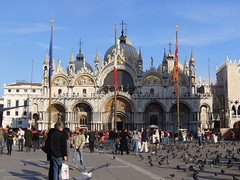
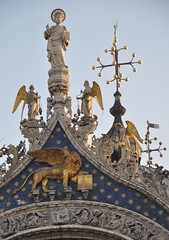

The central portal you can admire the mosaic that represents the Last Judgment and in the vaults of the side doors mosaics depict The transport of the Body of St. Mark , The Body of St. Mark taken from the infidels , The deposition of his remains in the Church .

In 978 he was ordered, then the famous Greek goldsmiths, the Pala d'Oro, because it was exposed during the most important celebrations that were carried out in the Basilica di San Marco. It was in the centuries expanded and renovated several times, until it was just as you see it today: a magnificent Byzantine works of gold with numerous gems and enamel set around images of Jesus Christ during his apostolic period.
The Pala d'Oro should still be considered only one of the many artifacts that the St. Mark Treasury holds in its rooms. Jars of sardonic, agate jars, chalices and reliquaries with gems, cups and bowls made of rock crystal, are some of the visible objects in the museum.
The interior of the basilica has the shape of a Greek cross and is divided into three naves with five domes covered externally lead. As you enter you find yourself under the Apocalypse Arco', followed by the Pentecost Dome 'which follows the middle Dome of Ascension, before arriving at the Presbytery with the high altar raised.




